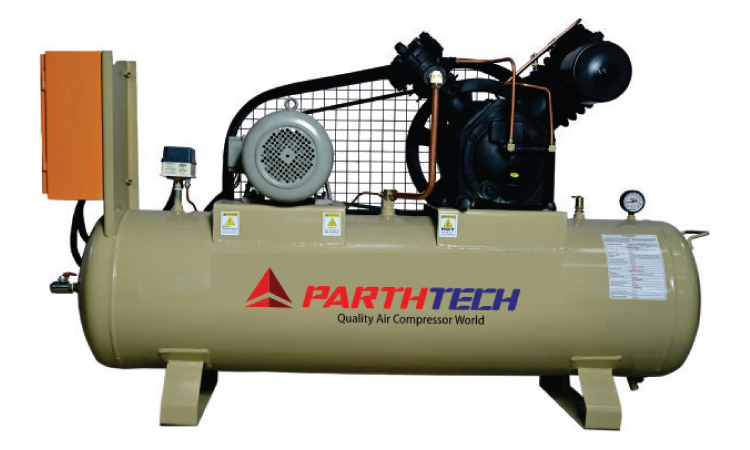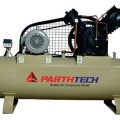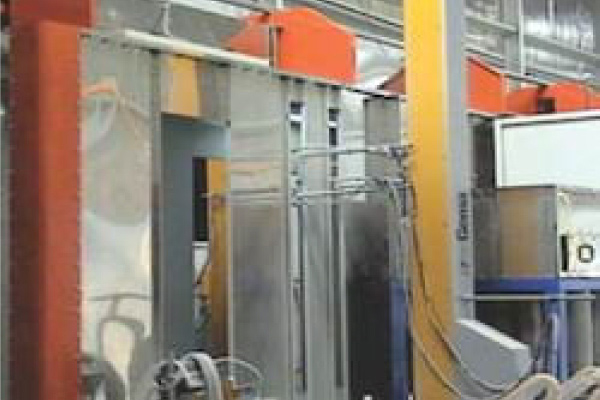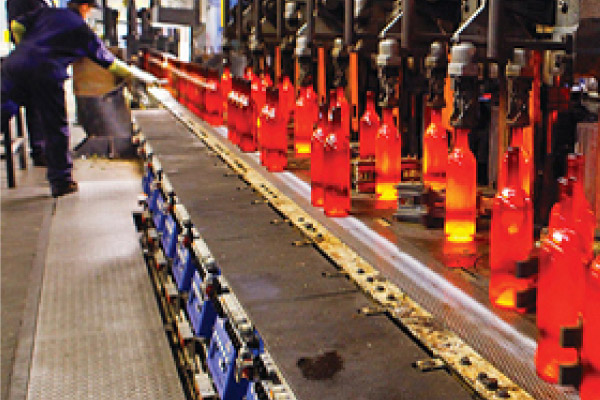-
Call
-
Whatsapp
9825014048
-
Location


Double Stage Air Compressor
Double Stage Air Compressor
Application: Textile Industries, Pharmaceutical Industries, Dairy Industries, Automobile Industries, Plastic Industries, Chemical Industries.
A double-stage air compressor is a type of air compressor that uses two consecutive compression stages to increase the pressure of the incoming air.
This two-stage compression process helps to efficiently generate high-pressure air for various industrial and commercial applications, such as pneumatic tools, manufacturing processes, and more.
Double Stage Air Compressor
Two-Stage Air Compressor
Air compressor has revolutionised industries, enabling various applications from manufacturing to construction. Among these technological marvels, dual-stage air compression stands out for its exceptional efficiency and ability to deliver high-pressure power. In this comprehensive review, we delve into the world of two-stage air compressors, breaking down their operations, advantages, and various applications in agriculture, all while considering cost and portability.
Two-Stage Air Compressor Understanding
- Two-stage air compressor:At its core, an air compressor is a device that converts energy, usually from an electric motor or gasoline engine, into compressed air. Air can be used for this reinforcement, and due to its versatility, it has been stored and used in various industries.
- Types of Compressed Air:Before diving into a two-stage air compressor, it is essential to understand that there are different air compressors. There are three types of compressors: reciprocating (or piston) compressors, rotary screw compressors, and centrifugal compressors. Two-stage air compression systems are among the parallel types known for their efficiency and flexibility.
- The Dual-Stage Distinction:Dual-stage compressors are distinguished by their clever design. Unlike single-stage compressors, which compress air in a single step, double-stage compressors divide the compression system into two sections or cylinders. This design allows for greater efficiencies, such as increased pressure, energy efficiency, and heat reduction.
How Does a Two-Stage Air Compressor Work?
- Basics of Compressed Air: Understanding the primary mechanism of compression is essential to understanding the inner workings of a two-stage compressed air system. An intake valve allows air into the compression chamber. As its pressure increases and volume decreases, the air undergoes steps of compression.
Key Characteristics:
- Two-stage process:The pressure path extends to two stages or cylinders in a two-stage air compressor. In the first stage, the air is compressed to a medium pressure. After that, it moves on to the second stage, where it presses further to achieve the desired high pressure. This versatility increases efficiency and allows the compressor to handle more demanding applications.
- Key features:Dual-stage compressors have many essential features, each playing a specific role in the compression process. There are several components in a cooling system, including cylinders, pistons, intake and discharge valves, intercoolers, and after-coolers. Together, they regulate the application of pressure, control the temperature, and ensure a continuous flow of compressed air.
Advantages of Two-Stage Air Compressor
- Increased efficiency:The two-stage system reduces the amount of work done per cylinder, resulting in increased energy efficiency and lower operating costs.
- High-pressure capability:Two-stage compressors can achieve significantly higher pressures than their single-stage counterparts, making them ideal for high-power applications.
- Durability and longevity:These compressors are designed to withstand heavy use periods and boast excellent durability for longevity.
- Reduced heat generation:By dividing the compression system, two-phase compression handles heat more efficiently, reducing the risk of overheating and extending the life of critical components.
Features of Double Stage Air Compressor
- Two-stage compression: The most defining feature is the two-stage compression system. Unlike single-stage compressors, which compress air in a single stage, double-stage compressors divide the pressure system into two sections or cylinders. This design allows higher-pressure applications and more efficiency.
- Higher Pressure Output:Two-stage compressors can achieve significantly higher pressure levels than single-stage models. This makes them suitable for applications requiring radiation, such as heavy machinery and industrial equipment.
- Increased efficiency: Due to the distribution of work between the two cylinders, dual-stage compressors consume less energy. Each cylinder compresses the air to an intermediate pressure, reducing work and energy consumption per stage.
- Durability: Both types of compressors are meticulously designed to withstand heavy-duty and harsh operating conditions. They are crafted from durable materials, ensuring their longevity and providing the audience with a sense of assurance in their long-term use.
- Heat Management: The division of the compression system into two stages provides better heat management and enhances the equipment's reliability. This reduces the risk of overheating and extends the life of critical components, ensuring a secure and uninterrupted operation.
- Precise air handling: Dual-stage compressors precisely control the incoming compressed air. This feature instils confidence in the equipment's performance, making it ideal for applications requiring consistent and accurate pressure management.
Double Stage Air Compressor Specifications
| Model | Pistn Displacement | Max. Pressure | Motor H.P. | No, of Cyl. | Air Receiver (Ltr) | ||
| CFM | M 3 /H | Kg/CM 2 G | PSIG | ||||
| PT 30 T | 7.46 | 12.64 | 12.3 | 175 | 2.0 | 2 | 92/150 |
| PT 30 T | 9.79 | 16.59 | 12.3 | 175 | 3.0 | 2 | 150 |
| PT 50 T | 17.32 | 29.35 | 12.3 | 175 | 5.0 | 2 | 200 |
| PT 75 T | 26.40 | 44.74 | 12.3 | 175 | 7.5 | 2 | 225 |
| PT 100 T | 35.00 | 59.32 | 12.3 | 175 | 10.0 | 2 | 300 |
| PT 175 T | 44.00 | 74.60 | 12.3 | 175 | 10.0 | 2 | 300 |
| PT 175 T | 49.50 | 83.90 | 12.3 | 175 | 12.5 | 2 | 300 |
| PT 175 T | 55.00 | 93.20 | 12.3 | 175 | 15.0 | 2 | 300 |
| PT 200 T | 68.16 | 115.53 | 12.3 | 175 | 15.0 | 3 | 300/500 |
| PT 200 T | 81.8 | 138.64 | 12.3 | 175 | 20.0 | 3 | 500 |
| PT 300 T | 87.28 | 147.93 | 12.3 | 175 | 20.0 | 3 | 500 |
| PT 300 T | 98.19 | 166.42 | 12.3 | 175 | 25.0 | 3 | 500 |
Industrial Manufacturing
Two-stage compressors power various manufacturing processes, such as metal fabrication, automotive assembly, and plastic molding. They provide the high-pressure air needed for pneumatic tools, machinery, and automated systems.
Construction
In construction, two-stage air compressors are used to operate jackhammers, air drills, and other heavy-duty tools. They are essential for tasks like concrete breaking, foundation drilling, and earthmoving.


FAQs

Frequently Ask Questions
Two-stage air compressor An air compressor that compresses air in two stages or cylinders. It differs from a single-stage compressor that compresses air in one step. The two-stage configuration allows for high input pressure and increased efficiency.
Dual-stage air compressors offer many advantages such as high pressure capability, high efficiency, high energy efficiency, and efficient thermal efficiency They are ideally suited for applications requiring high pressure continuous air .
Two-stage air compression systems are commonly used in agriculture to improve the efficiency of spray pumps. High-pressure air is provided for accurate and consistent application of fertilizers, pesticides and herbicides, reducing weeds and improving crop management
Yes, portable two-stage air compressors are available, making them suitable for jobs and projects that require mobility. These compressors can be easily moved between workstations or locations within the plant.
Two-stage air compressors can have higher upfront costs compared to single-stage ones. But their efficiency and durability tend to make them more cost-effective in the long run, saving energy and reducing maintenance costs




